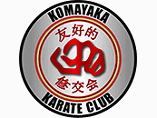History of Shukokai Karate
Introduction
Shukokai Karate, " The Way for All" is a dynamic form of Okinawan Karate and can be considered a direct descendant of its parent style, Shito Ryu.
The Evolution of Shito Ryu
The formation of the Shito Ryu school of Karate is accredited to Soke Kenwa Mabuni (1890-1952). Mabuni, like many of the old karate masters, was descended from the Okinawan warrior class, or bushi. Mabuni family members had served Okinawan lords for hundreds of years. Mabuni’s training was performed notably under 2 masters. At age 13, Mabuni became a student of Yasutsune "Ankou" Itosu (1830-1915). Itosu taught Okinawan Shuri-Te and was credited as the master who developed the pinan kata and was instrumental in organising early karate into the Okinawan school system. Itosu himself was a student of one of Okinawa’s most famous karate masters, Sokon Matsumura (1792-1887), the forefather of Shorin-Ryu. It is said that Itosu developed a strong bond with young Mabuni, passing on his knowledge of 23 kata’s. As a result of Itosu’s death in 1915, Mabuni became the second master of the Itosu school, During his teens, Mabuni also studied under Kanryo Higa(ashi)onna (1853-1915), a teacher of Naha-Te, a particularly chinese influenced karate style. Mabuni was introduced to Higaonna by his friend, Chojun Miyagi (who went on to become the founder of Goju-Ryu karate). During the 1920s, Mabuni participated with Miyagi in a Karate Club at a dojo known as Ryukyu Tode Kenkyu Kai, the "Okinawan Karate Research Club". This dojo saw many masters from a diversity of backgrounds train together, and whilst there Mabuni learned some Fukien Province White Crane Kung Fu, from the legendary Woo Yin Gue, a chinese tea merchant living on Okinawa. These teachings have survived through the kata Rohai (Crane on the Rock) and Nipaipo.
During this period, Mabuni had become a highly respected police officer, and frequently visited Japan following Funakoshi’s introduction of karate there, in 1922. In 1929, Mabuni relocated permanently to Osaka. Just after he took up residence there, the governing body for martial arts in Japan, the Butokukai, enforced that all karate schools should officially register by their style name. Initially, Mabuni named his style Hanko, meaning "half-hard", but by the early 1930s, he was using the name Shito-Ryu.
Mabuni took the first 2 characters from the family name of each of his orignal masters, thus establishing "Shito" as the name of his style, and acknowledging the contribution of his teachers to the development of his own style.
Mabuni resided in Osaka until 1952, devoting his entire existence to promoting his Shito school of Karate. It was during this lifetime that one of his students, Chojiro Tani was to further refine the style, into Shukokai Karate.
The Begining of Shukokai
Mr Chojiro Tani was born in Kobe, Japan in 1921 and began studying the art of Karate during Junior High School at the Gojo School of Karate. He entered Doshisha University in 1940 and furthered his studies of karate under the direction of Ken-wa Mabuni. In 1948 he opened the Shukokai School of Karate in Kobe, where he taught Tani-ha Shito-Ryu. He also organised clubs in Kyoto University and Osaka College of Economics, Tottiro University and Kobe University Medical School.
Outside of Japan, Tani’s style spread mainly in Europe (Kofukan International). Shigeru Kimura, one of the students of Chojiro Tani then promulgated Shukokai to the United States, whilst Yoshinao Nambu continued to teach in Europe.
